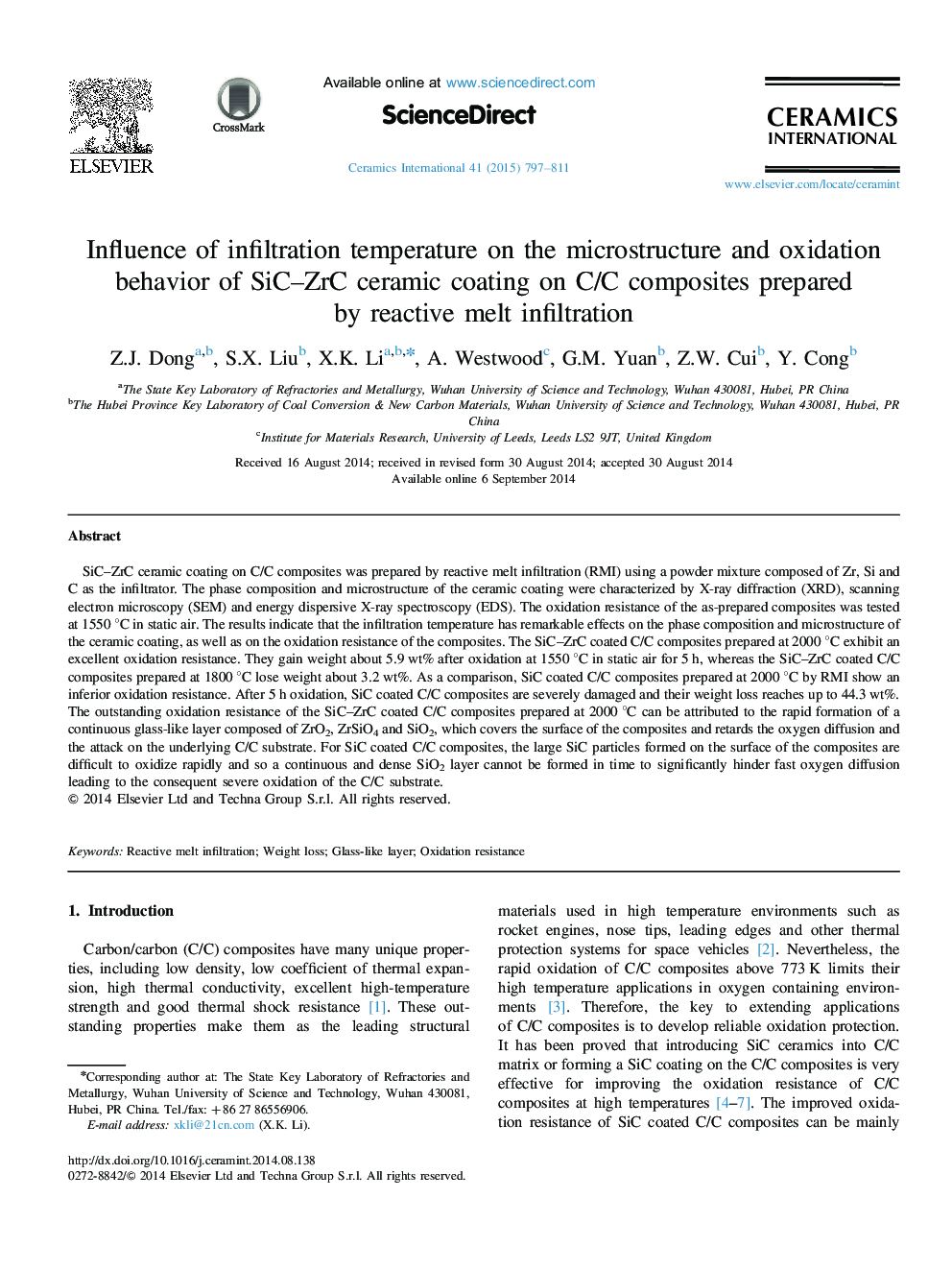| Article ID | Journal | Published Year | Pages | File Type |
|---|---|---|---|---|
| 1460770 | Ceramics International | 2015 | 15 Pages |
SiC–ZrC ceramic coating on C/C composites was prepared by reactive melt infiltration (RMI) using a powder mixture composed of Zr, Si and C as the infiltrator. The phase composition and microstructure of the ceramic coating were characterized by X-ray diffraction (XRD), scanning electron microscopy (SEM) and energy dispersive X-ray spectroscopy (EDS). The oxidation resistance of the as-prepared composites was tested at 1550 °C in static air. The results indicate that the infiltration temperature has remarkable effects on the phase composition and microstructure of the ceramic coating, as well as on the oxidation resistance of the composites. The SiC–ZrC coated C/C composites prepared at 2000 °C exhibit an excellent oxidation resistance. They gain weight about 5.9 wt% after oxidation at 1550 °C in static air for 5 h, whereas the SiC–ZrC coated C/C composites prepared at 1800 °C lose weight about 3.2 wt%. As a comparison, SiC coated C/C composites prepared at 2000 °C by RMI show an inferior oxidation resistance. After 5 h oxidation, SiC coated C/C composites are severely damaged and their weight loss reaches up to 44.3 wt%. The outstanding oxidation resistance of the SiC–ZrC coated C/C composites prepared at 2000 °C can be attributed to the rapid formation of a continuous glass-like layer composed of ZrO2, ZrSiO4 and SiO2, which covers the surface of the composites and retards the oxygen diffusion and the attack on the underlying C/C substrate. For SiC coated C/C composites, the large SiC particles formed on the surface of the composites are difficult to oxidize rapidly and so a continuous and dense SiO2 layer cannot be formed in time to significantly hinder fast oxygen diffusion leading to the consequent severe oxidation of the C/C substrate.
